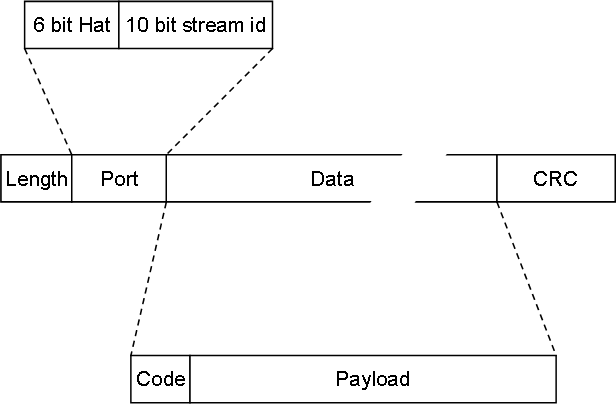BasicPI Hat’s uses SPI in a full network with up to 8 Hat’s per Raspberry PI. Communication with a STM32 will clock at ca 15Mhz (Set on Raspberry PI). The protocol uses GPIO pin’s as chip select for critical messages, but will otherwise rely on each device to filter out it’s own messages on MOSI. This allows Raspberry PI to send on MOSI independent of what device that is sending on MISO.
This is possible since all information about sender and receiver is in the message header in the form of a hat/stream-id and MOSI can be filtered in software. The SPI Message format is illustrated below:
Chip Select on MISO is always done between two messages from a Hat. Raspberry PI will either detect a pad character meaning the Hat has nothing to send or wait for a message to complete if the device uses it’s time slot. Each active Hat have a 1ms time slot before Raspberry PI switch to another Hat. The device with Chip Select active will send a status message and either continue with messages in the queue or send pad’s if no messages is waiting.
The way this should work is that messages on MOSI are sent in the same sequence as they are inserted into the queue. Messages on MISO will be received as soon as the Hat receive chip select. ME will load balance chip select so that Hat’s with large MISO queues receive more sending time than Hat’s with empty queues.
